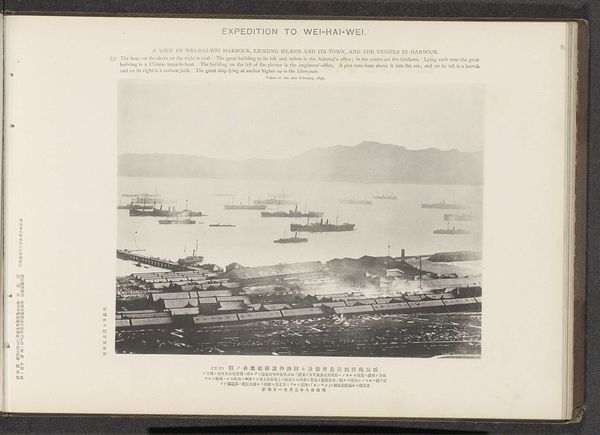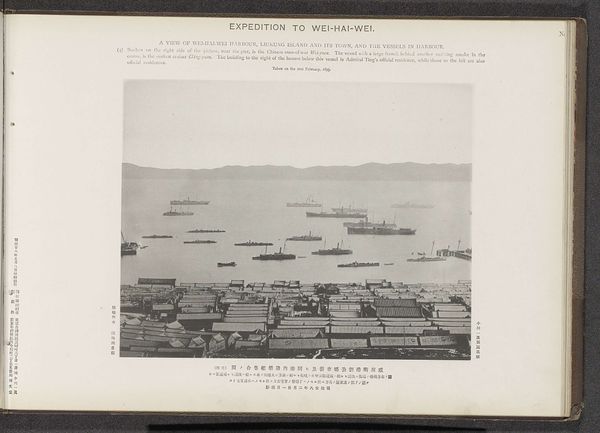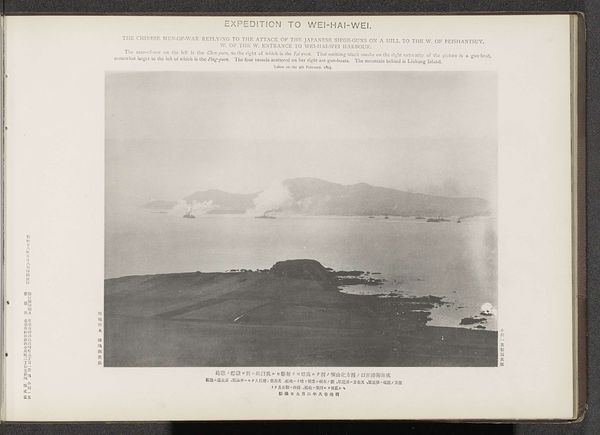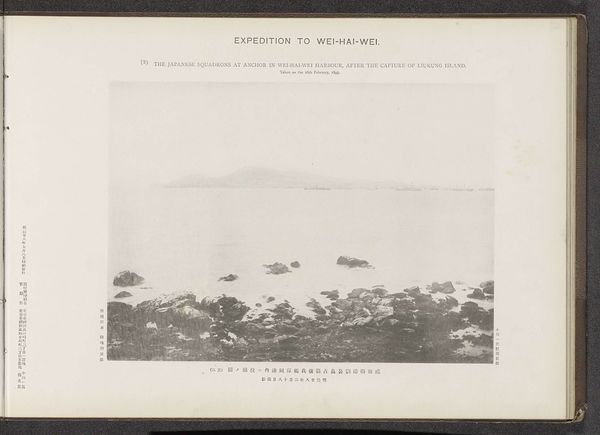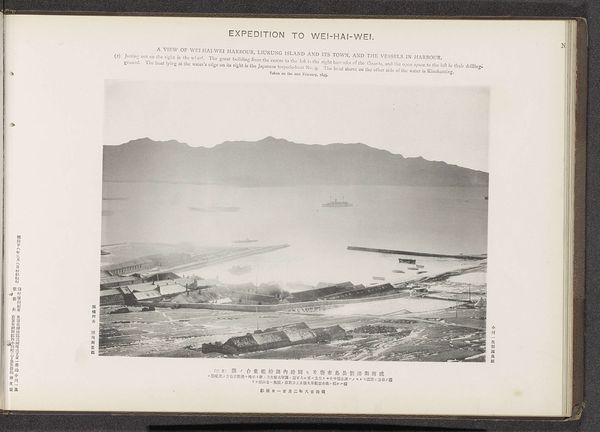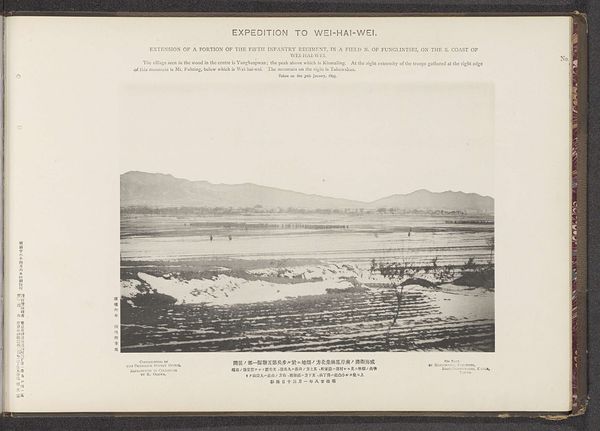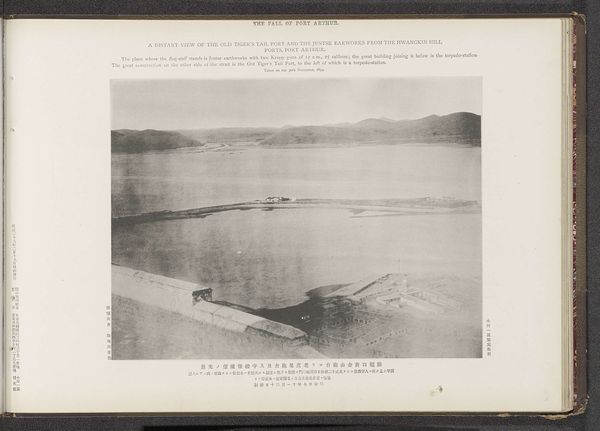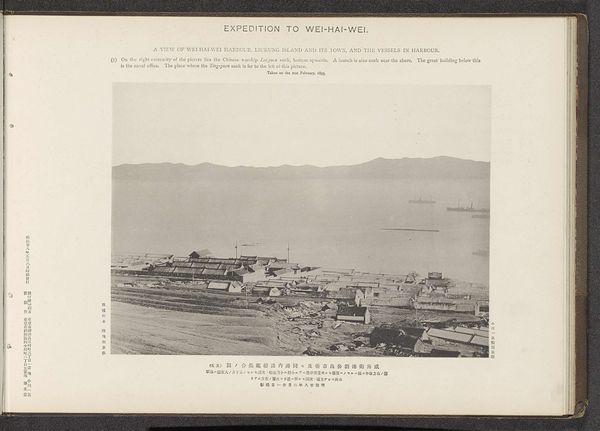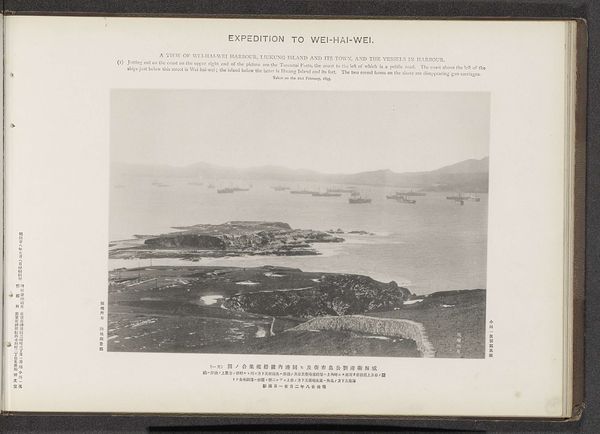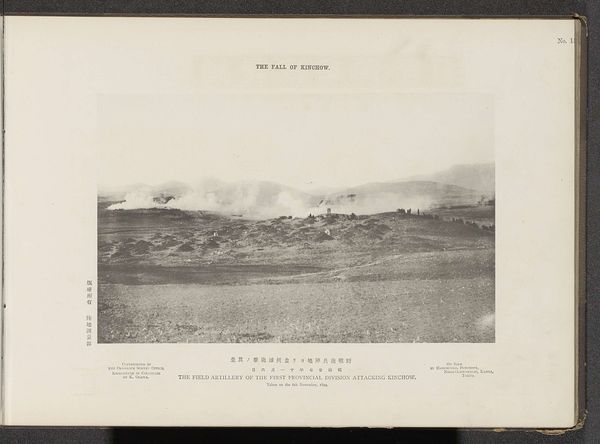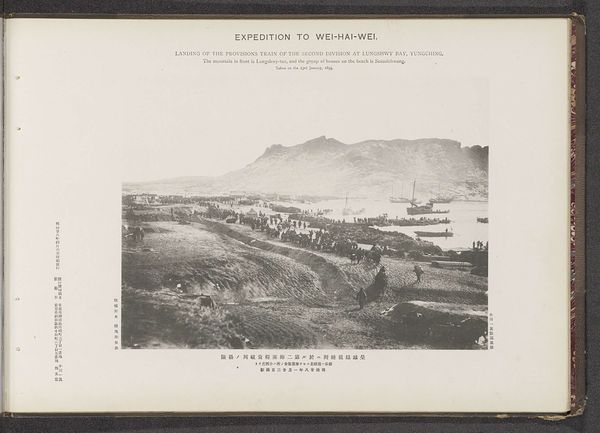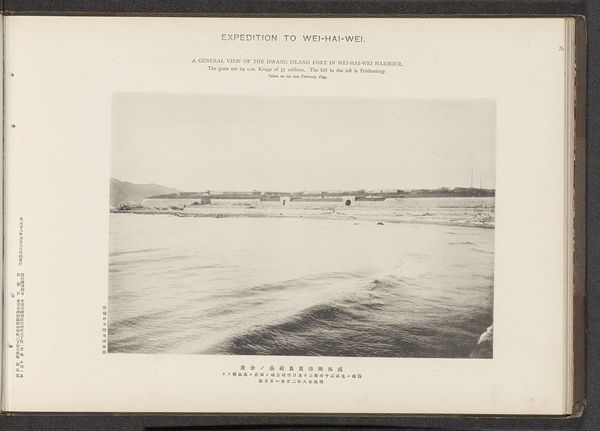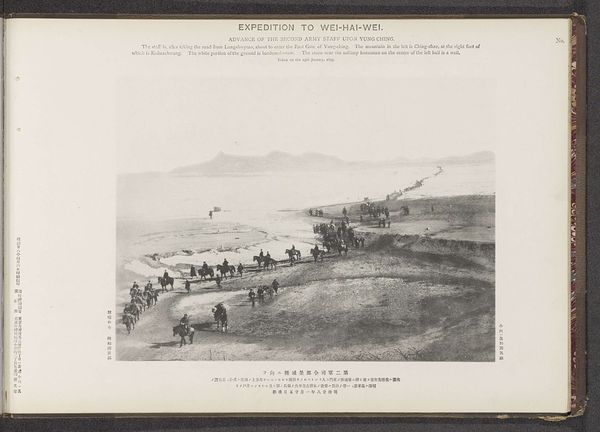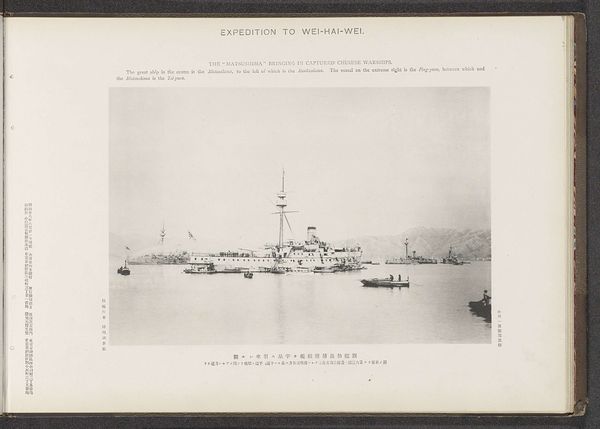
The men-of-war gathered on the water S.W. of Hwang island after the sinking of the "Ching-Yuen" Possibly 1895
0:00
0:00
print, photography, gelatin-silver-print
# print
#
landscape
#
photography
#
gelatin-silver-print
#
realism
Dimensions: height 213 mm, width 287 mm
Copyright: Rijks Museum: Open Domain
Curator: This gelatin-silver print, possibly from 1895, shows “The men-of-war gathered on the water S.W. of Hwang island after the sinking of the ‘Ching-Yuen.’” It's attributed to the Ordnance Survey Office. Editor: It's bleak, isn't it? A scene saturated with gray. The water and sky seem to merge, blurring the lines between the elements. You can almost smell the gunpowder and smoke captured in that gelatin. Curator: Absolutely, and the photographic process itself underscores the themes of documentation and historical record. We have ships, likely Japanese given the context of the First Sino-Japanese War, looming in the distance, while in the foreground lies an island, a silent witness to this naval conflict. The image is a material testament to geopolitical power dynamics. Editor: Right. Look at the flatness, though. No glorification here. The materiality speaks of loss. The sinking of the Ching-Yuen, the presence of these imposing warships… they underscore imperial ambitions clashing with devastating consequences. It pushes against any romantic reading of landscape. Curator: The sinking of the Ching-Yuen, as you pointed out, carries so much symbolic weight, particularly when examined through a postcolonial lens. It reveals the devastating impact of Western powers' technological superiority on China during this era. Think about the laborers involved, both in constructing those massive warships and, tragically, in serving on the sunken ship. Editor: And what about the land? It looms dark, as a form of a witness that exists before and after all. Its material presence grounds the political violence depicted here. Its enduring form stands against the war machines pictured. Curator: That's a powerful observation. And considering the Ordnance Survey Office created this print, its purpose becomes even more pointed. It was created by cartographers from colonial administration, using a purportedly objective medium like photography to advance a clear, political narrative. The print serves as an artifact, both documenting and legitimizing Japan’s military intervention in China. Editor: Exactly, nothing neutral about materials here. What can we learn by acknowledging both the landscape’s history, its extraction and exploitation, and also the labor of those whose ships and bodies have now sunken in these waters? Curator: By considering how material production shapes historical narratives and impacts identity, it shifts our understanding of war from heroic battles to tragic episodes marked by colonialism, industrialization, and human cost. Editor: A crucial point—this invites us to think about the relationships between geopolitical events, visual culture, and labor—especially their confluence in photography as material document.
Comments
No comments
Be the first to comment and join the conversation on the ultimate creative platform.
